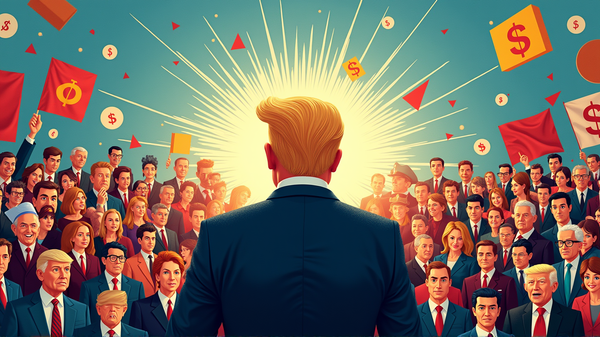'Missing Ingredients': How Trump's H-1B Fee Hike Could Undercut US Innovation
As the US grapples with technological advancements and global competition, a new policy threatens to disrupt the very foundation of its innovation-driven economy. The recent hike in H-1B visa fees introduced by President Donald Trump has sparked widespread concern among economists, industry leaders, and affected workers alike.
An Economic Recipe Gone Wrong
Justin Wolfers, an esteemed economist from the University of Michigan, has raised the alarm bell, likening the economy to a complex recipe where H-1B visas represent indispensable ingredients. Removing these ingredients could lead to an over-complicated and underwhelming result, leaving Americans with less innovative outputs. “Think of the economy as like baking a cake,” Wolfers articulates. “Without the missing ingredients — high-skill STEM workers — fewer projects get baked, and creativity may dwindle.”
The Crucial Role of H-1B Visas
The H-1B visa program, a longstanding cornerstone for many firms, especially in tech and engineering, allows companies to access a broader international talent pool. It’s a bridge facilitating the inflow of skills and ideas that spur nationwide productivity and innovation. Wolfers asserts, “H-1Bs are not just workers — they carry fresh ideas across oceans, leading to more patents and a boost in productivity.”
A Controversial Dialogue
While Wolfers’ insights resonate with many, the discourse remains polarizing. Detractors argue that these foreign professionals might displace American jobs, although data suggests otherwise. Evidence from 1990 to 2010 shows that H-1B inflows elevated wages for US college graduates by 4.2% and for non-college counterparts by 2%, without affecting native employment.
Despite this, voices like Howard University’s Ron Hira caution against oversimplifying worker protection issues, underscoring a complex debate fueled by political narratives.
Indians Bear the Brunt
Indians, who constitute the majority of H-1B visa holders, are particularly vulnerable under the new policy. With over 70% of visa petitions coming from Indian nationals annually, the fee increase heightens challenges for those earning under $150,000.
Industry’s Call for Reason
Industry advocates argue that the program fulfills an essential role in bridging the skill gaps domestically. As the US produces significantly fewer STEM graduates compared to India and China, the program is pivotal. Hard data reinforces this narrative: China churns out 3.57 million STEM graduates yearly, followed closely by India’s 2.55 million, while the US lags with 820,000.
Whither Innovation?
The imposition of a $100,000 annual fee risks dissuading a wide array of professionals from seeking US opportunities. According to Times Now, such directives might render the US less appealing to global talent, fundamentally affecting its innovative landscape and competitive edge. As these policy changes roll out, the economic ‘cake’ America seeks to bake remains in limbo, with its essential ingredients teetering on the brink of exclusion.




